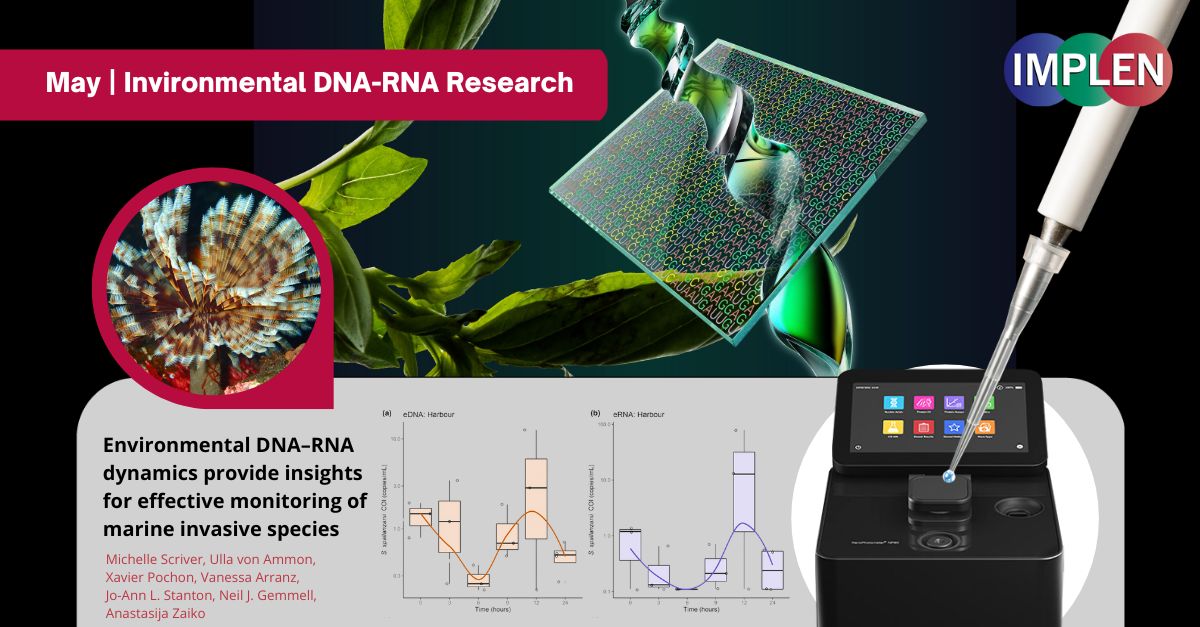Implen Journal Club | May Issue |
|
Exploring How Suvarna Bhasma Could Help Fight Parkinson's SymptomsThe first issue of the Implen NanoPhotometer Journal Club is highlighting research recently published by Biswas et. al. in the Journal of Ayurveda and Integrative Medicine which investigated the neuroprotective potential of Suvarna Bhasma (SB), a traditional Ayurvedic nanogold-based medicine known for its brain-supporting properties, on zebrafish exposed to rotenone, a pesticide that induces Parkinson's-like symptoms by inhibiting mitochondrial function and leading to dopamine neuron degeneration. This study was designed to explore whether pre-treatment with SB could mitigate the motor dysfunctions and neurochemical alterations caused by rotenone pesticide exposure. Behavioral assessments revealed that rotenone exposure significantly reduced movement and increased freezing behavior, but these symptoms were less severe in the SB-rotenone group compared to the rotenone-only group. The researchers also measured dopamine levels and found that rotenone exposure caused a significant decrease in dopamine in the brain. However, pre-treatment with SB provided a protective effect, reducing the extent of dopamine depletion. Proteomic analysis identified differentially expressed proteins linked to Parkinson's disease pathways, with SB preventing significant alterations in these proteins. The results of this study support the neuroprotective properties of SB, suggesting its potential in managing Parkinson's-like neurodegenerative disorders. The Implen NanoPhotometer® was used in this work to determine peptide concentrations. |
|
Decoding Marine eDNA: Oxford Nanopore Technology Sheds Light on Invasive Species DetectionNext, the Journal Club is highlighting a recent study published in the journal of Environmental DNA that explored the dynamics of environmental DNA (eDNA) and RNA (eRNA) in marine environments to improve the detection of invasive species. Scrivener et. al. investigated the persistence and decay rates of eDNA/eRNA by targeting the Mediterranean fanworm (Sabella spallanzanii), an invasive marine species in New Zealand. They collected seawater near a fanworm colony in Auckland's Viaduct Marina and stored the samples in permeable dialysis bags to simulate real-world environmental conditions. Some bags were also stored on ice to replicate field storage conditions. The results revealed inconsistent patterns in eDNA/eRNA decay, challenging traditional models that predict a steady decline in signal. Interestingly, no significant concentration changes in eDNA/eRNA were found over 24 hours. Instead, the total number and size of DNA fragments increased, likely due to microbial activity in the bags. Ice-stored samples showed no significant changes, indicating limited microbial growth. To investigate these microbial influences, long-read sequencing using Oxford Nanopore Technologies was employed. This analysis uncovered an increase in microbial eDNA reads in field-deployed samples, suggesting microbial growth within the dialysis bags. In contrast, ice-stored samples exhibited no significant changes, pointing to minimal microbial growth under cold storage. This research emphasized the need for further understanding of eRNA persistence and decay dynamics, as eRNA degrades faster than eDNA due to its inherent instability. Such insights are crucial for refining sampling protocols, improving survey accuracy, and enhancing molecular detection methods to effectively monitor and manage invasive species in marine ecosystems. The Implen NanoPhotometer® was used in this study to measure the quantity and quality of extracted RNA. |
|
How Circadian Genes Influence Obesity and Metabolic Health in Pregnant Women: New InsightsOur next issue is highlighting a study that looked at how certain genes related to our body’s internal clock can influence weight gain in pregnant women. Overweight and obesity are complicated conditions influenced by both genetics and lifestyle. This research focused on specific genes, CLOCK and BMAL1, which are connected to health issues like heart disease, metabolic problems, and sleep disorders. In addition, it also investigated the CD36 gene, which affects how we metabolize fats and perceive fat in foods. This study included 291 pregnant women, split into normal-weight and overweight/obese groups. It was found that women with a specific variant of the CLOCK gene (A-allele in CLOCK rs4864548) were more likely to be overweight or obese. This genetic variant was also linked to lipid levels in the third trimester, suggesting it plays a role in metabolic health. A detailed analysis showed that carrying this CLOCK gene variant is a strong risk factor for obesity. However, following a Mediterranean diet and having higher HDL (good cholesterol) levels reduced this risk. Interestingly, this gene variant was also associated with lower birth weight in babies, indicating it might affect the baby’s health as well. These findings suggest that our internal body clock genes could play a significant role in obesity and metabolic health during pregnancy. This study emphasized the importance of genetics and lifestyle in managing weight and health during pregnancy. The Implen NanoPhotometer® NP80 was used in this work to quantify nucleic acids by measuring UV absorption. |
|
Exploring Mosquito Nectar Foraging: DNA Barcoding Reveals Plant Preferences in Canadian PrairiesAs summer approaches and flowers bloom, this week’s Implen NanoPhotometer Journal Club is highlighting a groundbreaking study published by Cassone et. al. in the Journal of Insect Science that explored the natural plant-feeding behaviors of mosquitoes. Conducted over two years in Manitoba, researchers collected nectar-fed female mosquitoes and used DNA barcoding to identify the plant species they fed on. This study found that mosquitoes foraged from various plant families, with a preference for soybean and Kentucky bluegrass. This research highlighted that these preferences varied depending on mosquito species, collection date, landscape, and region. Female mosquitoes need vertebrate blood for egg production but also consume sugary plant nectar for energy. This dual feeding behavior had been primarily studied in laboratory settings. This study provided insights into the natural foraging behaviors of mosquitoes in North America with noted significant differences in nectar preferences between urban and rural areas and between eastern and western Manitoba. This research represents some of the first DNA-based evidence of nectar feeding behaviors of mosquitoes in Canada, contributing valuable knowledge to the understanding of mosquito ecology and behavior. The Implen Nanophotometer® NP80 was used in this work to assess DNA quantity and quality. |
©2024 Implen. All rights reserved.



